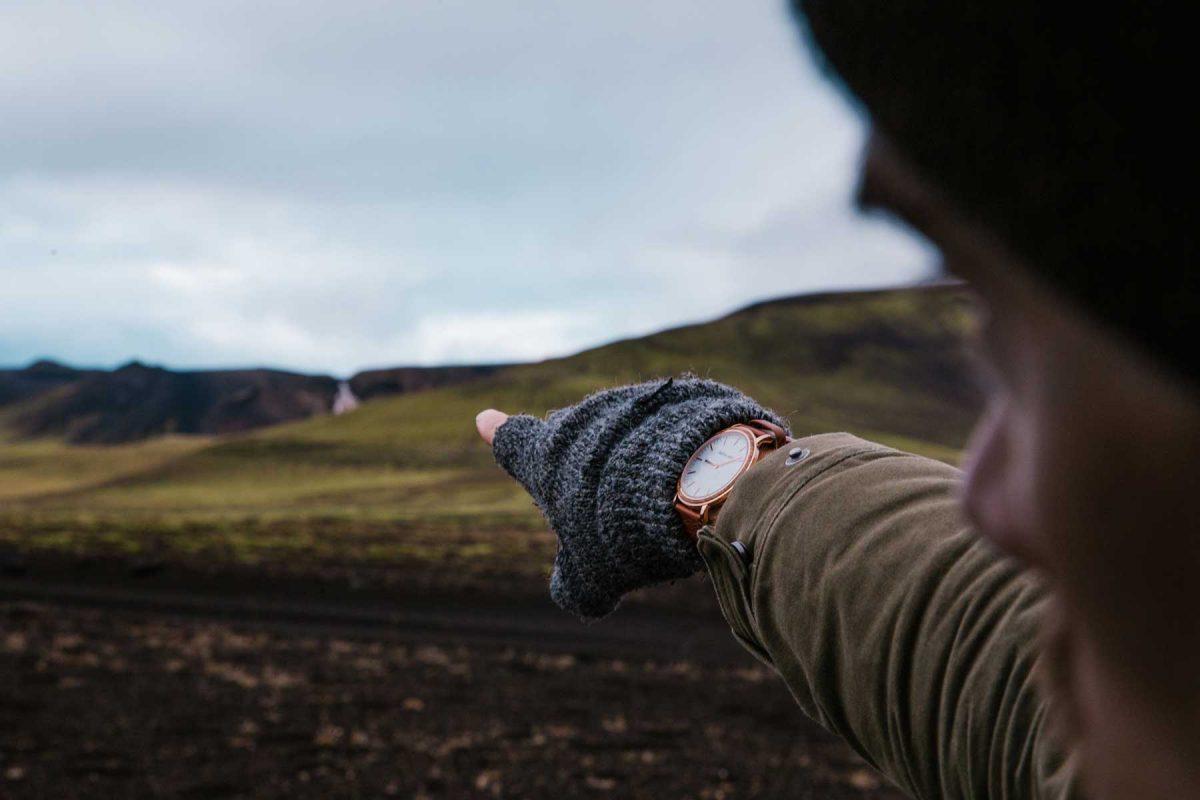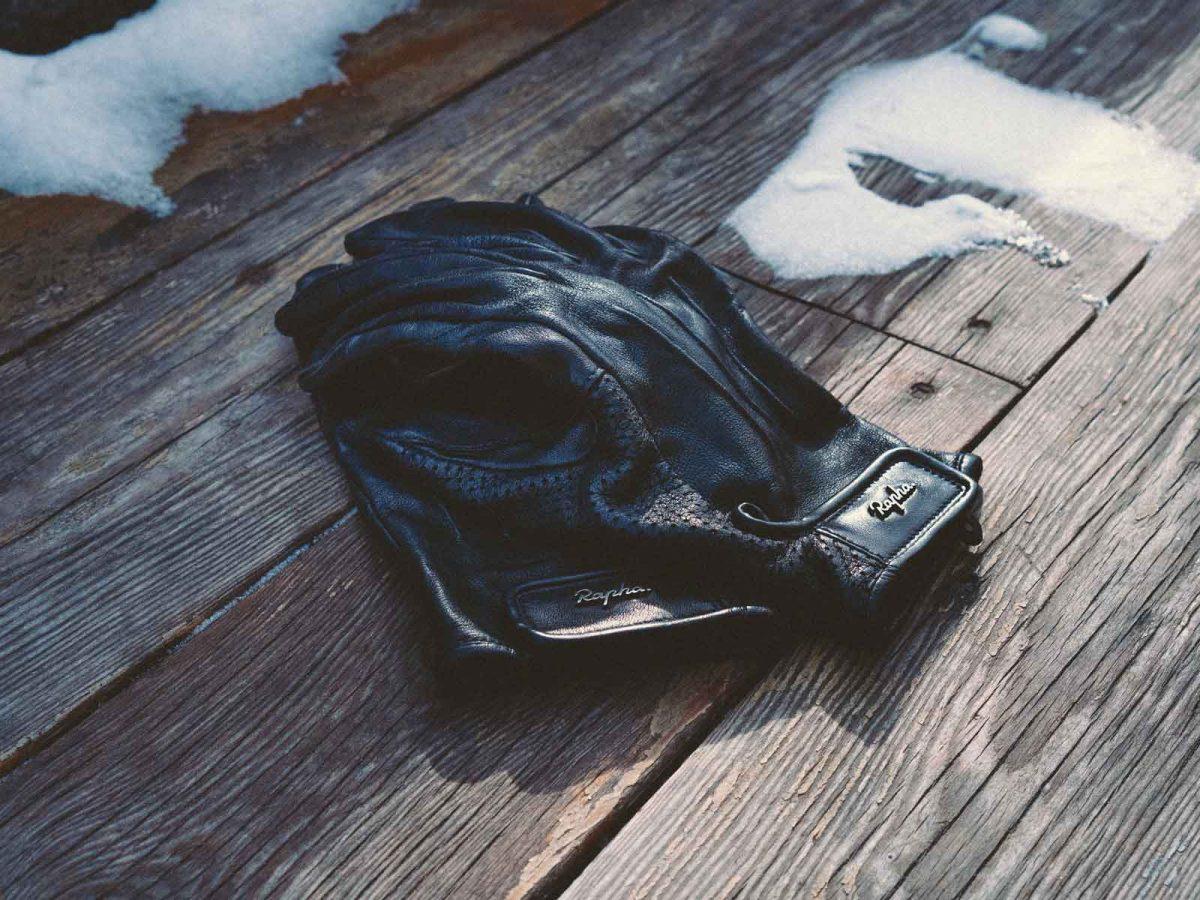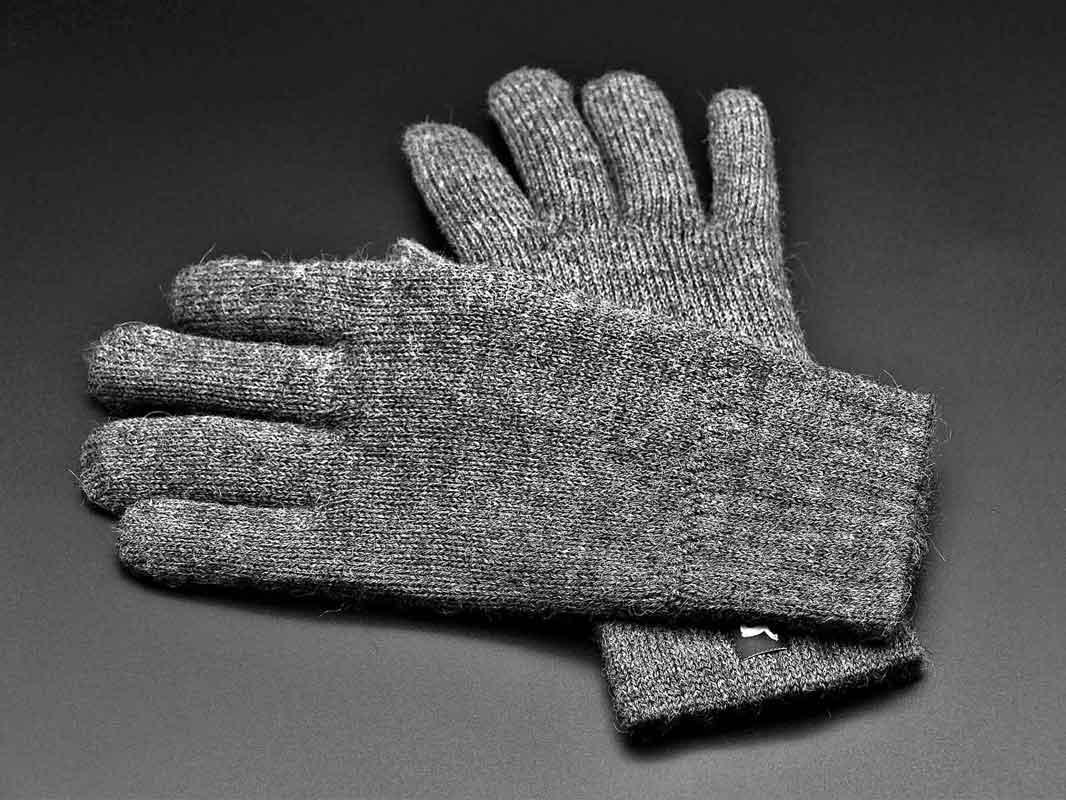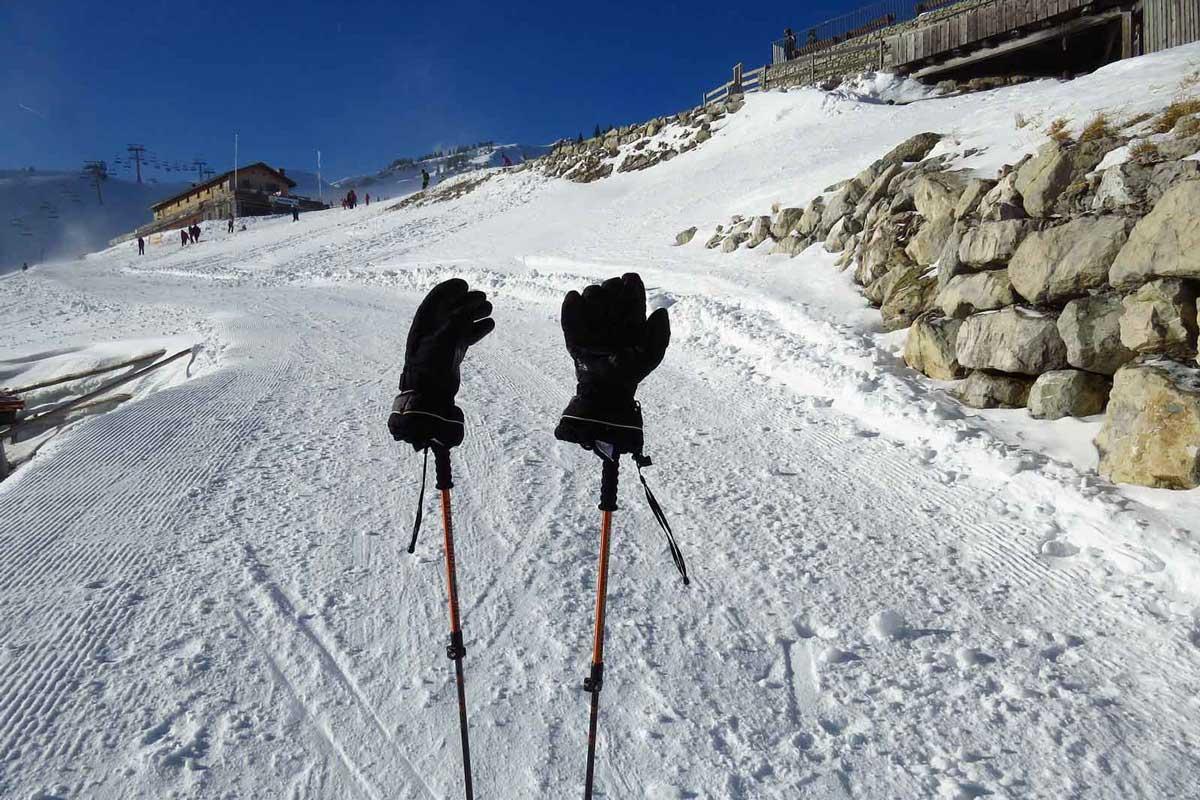Choosing winter gloves and mittens for your needs can be difficult because there are various options making it difficult to orient yourself in the abundance of models, designs, and materials. This guide will help you choose the right type of gloves for your specific needs.
Having a pair of gloves is essential when being in cold environments. In such conditions, without gloves, your hands will stay cold which is not only painful and unpleasant but can be extremely dangerous with serious long-term consequences for everybody who underestimates the risk of frostbite. Rain and wind will exacerbate the situation further because they facilitate heat loss, which is most predominant in body extremities. This happens because, in cold conditions, fingers and toes rely mainly on blood circulation to produce heat. However, cold weather causes vasoconstriction reducing blood flow and thus precluding body extremities from getting the much-needed heat to warm them. As a result, fingers and toes are often affected by frostbite and other injuries caused by exposure to low temperatures for prolonged periods. Thus, wearing a pair of waterproof gloves or mittens is one of your best options when being outside in cold and wet conditions.
You are viewing: How To Choose Good Winter Gloves
Certainly, hand and finger performances are affected by low temperatures. The lower the temperature, the more significant is its effect on finger dexterity and sensitivity as fine finger functions are almost entirely lost when the ambient temperature is lower than 4.4°C. That’s why you shouldn’t be surprised to learn that the use of gloves for cold protection is not new but can be traced back to Roman times. Pliny the Younger writes in one of his letters (XXVII to Baebius Macer):
A shorthand writer constantly attended him, with book and tablets, who, in the winter, wore a particular sort of warm gloves, that the sharpness of the weather might not occasion any interruption to my uncle’s studies…

Photo by Brodie Vissers
Materials for gloves and mittens
As with other garments used for insulation, mittens and gloves must be made of fabrics that retain warmth when wet. Thus, the majority is made of wool, synthetics (such as fleece), wool-synthetics blends and leather. The main consideration when choosing a pair of cold protection gloves should be performance versus wear. The choice of materials and technologies is much easier when you know what type of gloves would suit your needs best.
Wool
This fiber has been used for outdoor apparel for several reasons:
- Wool is resilient thanks to the elastic nature of the fiber.
- It’s warm (thanks to the air spaces in the material) and feels soft and comfortable.
- It traps air, which makes it an excellent insulating material.
- Wool can absorb and release moisture and still stay relatively breathable.
- Wool has natural antibacterial properties that make it odor-resistant.
Moreover, wool is an easy fiber to dye, it’s inherently fire retardant and does not burn but chars to ash. All these make wool suitable for manufacturing gloves and mittens for cold environments.
Among the various types of wool, merino wool is the most preferred one for producing activewear since it is high-quality wool that possesses some unique properties. For example, merino gloves and mittens are very warm and incredibly soft inside and out. One of the biggest drawbacks of merino wool is its price, so gloves made of quality merino are pricey. Additionally, you will rarely find waterproof gloves or mittens made of merino. Generally, although there are merino mittens, it isn’t among the most popular fibers for mittens.
Note that similarly to merino headwear, merino gloves and mittens are rarely made of 100% wool but more often they are a blend of wool and various other fibers to add resilience and to regulate absorption, wicking, air circulation, and insulation.
Synthetics
Fleece gloves are a typical representative of the gloves made of man-made materials. Fleece mittens aren’t very popular but there are good models that are warm and comfortable in freezing temperatures.
An important feature of windproof gloves is their thickness. Clearly, the thinner they are, the more dexterity they offer. Of course, it doesn’t come without drawbacks. As a rule, there is a trade-off between warmth and dexterity as thinner gloves are lighter and provide excellent dexterity, however, they aren’t as warm as those with polyester fleece inside. Windproof fleece gloves and mittens often come with reinforcements on the fingers and palms that make them more durable (fleece gloves that aren’t windproof are relatively fragile). These reinforcements come in the form of a special coating that’s usually made of various polymers and elastomers. Synthetic materials such as PVC, neoprene, and rubber provide better hand protection (from abrasion, water, oil, etc.) and stay relatively flexible until the temperature reaches a certain value. Above this temperature, synthetics are flexible; below this temperature, these materials become stiff and brittle.
The properties of most synthetic materials vary with temperature thus you need to follow the temperature ranges and instructions given by the manufacturers when choosing appropriate gloves or mittens for particular weather conditions. Generally, at low temperatures, synthetic materials harden and crack, while at higher temperatures they either harden or become softer. The best/most reliable man-made materials for extremely cold weather are neoprene (it stays flexible down to -10°C), rubbers (down to -25°C), and thermoplastic polyurethanes (down to -50°C). What’s interesting is that rubbers gradually become harder as the temperatures drop from room temperature to -20°C. This means that material is, generally, more resistant to cutting, puncture, tear, and abrasion at low temperatures as most materials harden in cold conditions.
Leather
Leather gloves and mittens are a popular choice for cold environments. This is due to the fact that leather remains flexible at low temperature, it offers good grip (leather gloves are often worn by climbers for rope handling such as rappelling or belaying) as well as it is relatively waterproof, breathable, puncture and abrasion-resistant. All these make leather glove or mitten a preferred candidate for cold weather conditions, especially considering the fact that leather cracks at a temperature as low as -180°C. However, there are several drawbacks of wearing leather gloves and mittens:
- Leather is not waterproof unless treated with some kind of water repellent.
- When wet, leather gloves and mittens either soften (at high temperatures) or harden (at low temperatures). This effect is in direct relationship with the absorbed water quantity and content.
- The mechanical properties of leather vary depending on the animal.
- Leather offers limited resistance to cutting.
- Leather mittens and gloves are slow to dry and provide no insulation when wet.
Synthetic (faux) leather is also a popular material among manufacturers of gloves. It comes in various types as each one has different properties. For example, some kinds of synthetic leather aren’t affected by water (such as PVC-based synthetic leather. Main drawbacks are: it’s sensitive to environmental aging added to the fact that it isn’t breathable at all); some are breathable (porometrics are half as breathable as leather), while others are more abrasion-resistant (polyurethanes).

Features of gloves and mittens
There are several main features of cold-weather gloves and mittens:
Functionality and comfort
Functionality is among the pivotal characteristics of a pair of good gloves. Professionals in various areas know that glove dexterity is essential for the proper execution of tasks at low temperatures. Below certain temperatures, human fingers lose part of their sensitivity, which can seriously impair their ability for performing fine tasks. For example, below 19°C (66°F) fingers start losing tactile sensitivity which means that their ability to feel surfaces deteriorates. This is associated with an increase in the accident rate.
Dexterity is linearly correlated to the thickness of the materials used. Thick materials usually negatively impact the ability to manipulate small objects producing a loss in glove dexterity. Dexterity is also correlated to stiffness (it increases at low temperatures) and fit as tighter gloves may restrict blood circulation in addition to the fact that they’re less flexible. On the other side, too loose gloves are not suitable for activities where high performance is required. Thus, in order to get the best performance out of your winter gloves, they need to fit properly. Note that mittens aren’t meant for dexterity but for warmth. So you can’t rely on your mittens when you need to carry out a task that requires fine motor skills. Unsurprisingly, you’ll rarely find mitts that are great for belaying while ice climbing.
Although a subjective feeling that depends mainly on fit (but also partially on the lining material/s, breathability, freedom of movement, etc.), comfort is very important for your overall outdoor experience. Thus you need to consider comfort among the most important characteristics of gloves and mittens for cold protection. Generally, most people are able to identify if a glove or mitt is comfortable or not.
Thermal insulation in gloves and mittens
Read more : How To Wash A Baseball Glove
Warmth and thermal insulation depend on the ability of a material to trap as much air as possible within its structure. Of course, glove lining made of such kind of material will keep your hands and fingers warm, however, it will also make the glove bulky hampering its dexterity. As discussed above, mobility is limited with mitts, but on the other hand, they are meant to keep fingers warm at below-freezing temperatures. And thermal insulation is critical for maximum warmth in zero temperatures.
Typical materials for glove/mitten insulation are wool (will keep you warm even when wet), fleece, and synthetics (Primaloft is one of the best man-made materials for glove linings because it’s water-resistant as well as soft and comfortable and will keep your hands warm at very low temperatures).
There are various fibers made to ensure excellent thermal insulation without sacrificing comfort and dexterity. Among them, we should mention Thinsulate, Thermolite, polyester hollow fibers, and Kevlar. What’s common among them is that they’re dense with enough space between fibers for trapping air inside their core thus making the insulated gloves warm enough for working or walking in extremely cold environments.
The table below shows the thermal conductivities of various insulating materials.
Table 1: Thermal Conductivities of Various Insulating Materials

Source: Textiles for Cold Weather Apparel*, p.377
Though lining materials are very important for proper thermal insulation, weather conditions also play a significant role. For example, wind and low temperatures have a huge impact on hand protection in cold environments.
Water and wind resistance
Gloves and mittens made for high performance on or off the trail must be water and wind-resistant. Some kinds of gloves and mittens contain waterproof breathable membranes that make them either partially or fully waterproof. The positive side of having a pair of waterproof gloves or mittens is that they shield off rain and snow. Ironically, this may not be enough for keeping your hands warm and dry because if the material isn’t breathable enough, moisture may build up inside the gloves, which:
- Reduces their thermal insulation capacity; and
- Produces an unpleasant feeling of a damp cloth
One possible solution is to wear gloves with semipermeable membranes that provide a combination of protection against water coming from the outside and water-vapor permeability that transports moisture from the inside to the outer side of the glove. The waterproofing of the outer surface of gloves can also be increased by the application of a hydrophobic coating.
Breathability
Breathability goes with water resistance when dealing with cold conditions. It involves the ability of a material to permeate enough air (reducing the danger of overheating this way) and to transport moisture (in the form of water vapor) out of the glove ensuring dry hands. A good pair of gloves will have the right balance between air permeability and limiting the cooling effects of cold air entry.
Gloves and mittens with touchscreen compatibility
Touchscreen-friendly mittens and gloves are becoming more and more popular in the last several years. Generally, such kinds of gloves and mittens have touchscreen-compatible fingers and palms. They work well with touchscreens so that you could use your smartphone or tablet while with them. This feature is more common in glove liners such as the Santic Dorin Liner or in mid-weight gloves like Outdoor Research Sureshot Softshell. There are also touchscreen mittens such as Burton Gore-Tex.
Types of gloves
There are various types of gloves for cold protection. Here’s a list of the types of gloves you are most likely to use for protection in cold temperatures and environments.
Liner gloves
Liner gloves are thin, lightweight, versatile, moisture-wicking, quick-drying, and comfortable with bulk-free fit and compact design for ease of movement and to readily fit under outer gloves when using a two-glove system. An effective liner should also be durable and abrasion-resistant and should provide some warmth and retain dexterity to tie shoes, adjust a zipper, use a phone or do chores in camp. Though wearing liner gloves can allow for doing some chores in camp, keep in mind that many synthetics can melt in the heat of a stove. For example, the melting point of acrylic, nylon, and polyester is 160°C (320°F), 220°C (428°F), and 295°C (482°F) respectively.
Merino wool and various merino blends, as well as synthetic fibers such as acrylic, nylon, and polyester, are among the most popular choices of materials for liner gloves. Keep in mind that most liners are meant to be worn underneath another set of gloves in cold or wet weather so it isn’t realistic to expect the warmth of thick gloves in sub-freezing temperatures if you wear the gloves alone.
Liners can be used as stand-alone gloves or coupled with other gloves/mittens for outdoor work, bicycling, fishing, skiing, running, and hiking.
There’s a wide variety of glove liners, especially in big stores/sites like Walmart, Amazon, REI Co-op, and Decathlon. Some of the most popular brands include Smartwool, Outdoor Research, and The North Face.

Winter gloves
Classic winter gloves are thick and warm and offer protection from wind and cold. Some winter gloves have waterproof inserts for better protection from wet snow and water. Solid gloves are usually made of synthetic materials such as nylon, polyester (including fleece), polyurethane, neoprene, and spandex. Man-made materials are lightweight and durable and these characteristics make them suitable for producing dependable winter gloves such as the Showa 282 Gloves (these gloves aren’t pretty but they are probably the best budget-friendly waterproof breathable insulated gloves). Leather and faux leather are also used. Winter gloves should be comfortable with solid construction offering enough warmth and protection without sacrificing dexterity.
Desirable features of good winter gloves include:
- Quality insulation – PrimaLoft and Thinsulate for the more expensive models, cheaper synthetic fibers for the less expensive designs
- Zip stash pockets on the back of the gloves for hand warmers
- Reinforced, grippy palms and fingers for a secure grasp on ice axes and ski/trekking poles
- Long gauntlet cuffs with 1-hand adjustable wrist straps to adjust the fit
- Elastic drawstring with cord locks to seal out cold air
- Wrist leashes secure the gloves together
Thick gloves are warm and can be very useful in dry and cold weather, however, this comes at a price. Here are the biggest downsides of using thick gloves:
- Reduced dexterity and breathability
- Feeling cold when wet
- The drying time is longer
The last one can be avoided by wearing waterproof breathable mittens over your gloves as the mitts will keep the gloves dry.
Read more : How Gloves Can Get Contaminated In Food Manufacture
Winter gloves are used for protection in cold conditions and environments and are suitable for winter outdoor activities such as snow sports, going out, driving, bike riding, motorcycling, and backcountry adventures.

Heated gloves
Battery-powered heated gloves give additional heat for the entire hand in very cold weather. They should be windproof and (at least) water-resistant. If they aren’t waterproof, you won’t be able to use them in wet weather for hours. Each glove has a zippered compartment for batteries. The palms are made of leather or some other hard-wearing material for added durability and weather resistance. Thinner and lighter models have more dexterity and allow for better grip and to manipulate boots, zippers, etc., whereas thicker designs are more difficult to work with but will keep your hands warmer in bitter cold. Good models are well-made and easy to use.
Main problems include:
- Short battery life and when the battery dies – they are useless
- It takes a lot of time to charge the batteries (8-12h)
- Possible interference in GPS signals for other devices (beacon search so they may not be good for backcountry touring/backpacking)
- Pricey as some models can cost as much as $200-$300
- Not as warm as advertised
- You may need some specific directions/instructions for use
- Not durable enough to use regularly in the outdoors
Heated gloves can be used while working, winter bike riding, wintertime pursuits like skiing and snowboarding, ice and alpine climbing as well as for general use in heinous weather and extremely cold conditions. Heated gloves may not be as popular as other types of gloves but they have their fans. Outdoor Research is among those producing good heated gloves.
Fingerless gloves
Fingerless gloves provide an increase in skin temperature compared to bare hands, however, they more or less restrict finger flexibility. Anyway, a pair of fingerless gloves provide an increased level of fingertip sensitivity and functionality in comparison to a pair of normal gloves. The materials used are the same materials typical for gloves.
This kind of glove is suitable for a range of outdoor activities such as rock climbing, operating cameras or using mobile phones.
Three types of fingerless gloves
Fingerless tactical gloves
Tactical fingerless gloves should fit nice and snug to perform well in tactical situations. That’s why they often have:
- Molded knuckles for dependable protection
- Reinforced palm for better grip, and
- Adjustable wrist straps with Velcro fasteners for a custom fit.
Additionally, the most widely used colors include army green, black, khaki, and various camouflage patterns. Manufacturers often produce one model in both designs – as fingerless and as full-finger gloves.
Fingerless cycling gloves
Fingerless and gel-padded gloves are very popular choices for cycling. The main features and designs of fingerless cycling gloves are the following:
- Ergonomic design to disperse pressure
- Pad on palm for a secure grip and to absorb shock and vibration
- Gel and foam reduce fatigue for long-lasting comfort
- Stretchy, breathable, and elastic fabric for a better fit
- Adjustable hook-and-loop closure
Good fingerless cycling gloves should provide dexterity, cushioning, and grip for maximum performance and comfort.
Fingerless gym gloves
Fingerless and half-finger gloves are typical for weight lifting and gym as they provide better grip, wrist support, and ensure added breathability and moisture ventilation. Their main features and characteristics include:
- Suede leather on the palm for strong grip, cushioning, and to alleviate pressure
- Breathable, moisture-wicking, and quick-drying fabric for comfy dry training
- Wrist strap with hook-and-loop closure for wrist support, quick on and off, and easy hand adjustments
- Flexible fabric and finger design for enhanced hand and dexterity
Better grip and enhanced movement and ventilation are very important for those interested in powerlifting, strength training, and bodybuilding. Thus, good fingerless gym gloves are expected to provide all of these.

Types of mittens
There are various types of cold-weather mittens. Here’s a list of the types of mittens you are most likely to find and use for protection in bitterly cold.
Classic winter mittens
Classic mittens are thick and warm as their job is to provide excellent protection on the coldest days. They are made to keep your hands nice and toasty while providing better protection from wind, wet snow, and water. Good mitts are roomy so that you could use liner gloves.
The most commonly used fabrics for solid winter mittens are synthetics such as nylon, polyester, polyurethane, polyamide, and spandex. Leather and synthetic leather are also used for the shell as well as for the reinforcement of palms and fingers.
Desirable features of good winter mittens include:
- Lightweight, durable, and abrasion-resistant shell
- Quality insulation is extremely important for winter mitts as (just as in the case of winter gloves) materials like PrimaLoft, Thinsulate, polyester fleece, and down are especially popular;
- Pocket for hand warmers for staying warm in temperatures well below freezing
- Wind and waterproof breathable inserts to help keep your hands dry
- Solid stitching as well as reinforced palms and fingers (durable materials such as high-quality leather, Kevlar or polyurethane are commonly used for this) for better grip and to handle rough usage
- Large gauntlets with elastic pull straps that are easily operated
- Wrist strap to secure the mittens together
The intended use of winter mittens is to provide warmth and protection during outdoor activities in extreme cold temperatures so you shouldn’t be surprised that most models are quite bulky. This limits their range of motion further.
Heavy-duty constructions are quite expensive but you can’t expect it to be different for mittens good enough to stand up to the challenges of climbing Mt. Everest or surviving in the Arctic.
Source: https://t-tees.com
Category: HOW
